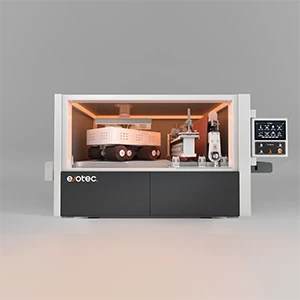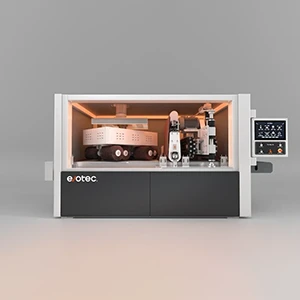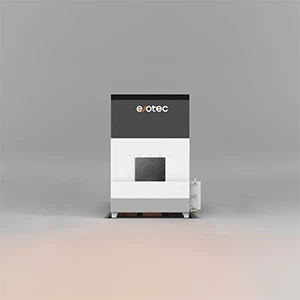How Deburring Machines Work: A Technical Guide to Burr Removal Processes
Burrs are an unavoidable byproduct of laser cutting, punching, machining, stamping, and other metal fabrication processes. Left untreated, they can compromise safety, weaken coatings, disrupt assembly, and increase rejection rates. As manufacturers move toward higher precision and automation, deburring machines have become an essential part of modern production lines—ensuring clean edges, consistent quality, and optimal downstream performance. This technical guide breaks down how deburring machines work, what technologies power them, and how manufacturers can determine which system fits their production needs.

Key Takeaways
How Deburring Machines Work: A Full Technical Breakdown
1. Understanding Burrs and Why They Need Removal
Burrs appear when metal is cut, sheared, drilled, milled, punched, or laser-cut. There are three primary burr types:
- Primary (vertical) burrs – caused during cutting or punching
- Secondary (lateral) burrs – caused during machining or shearing
- Micro-burrs – small raised edges affecting fine components
These defects lead to:
- Poor coating adhesion
- Assembly misalignment
- Safety hazards
- Reduced part lifespan
- Higher reject rates
A deburring machine removes these imperfections and prepares the part for downstream processes like painting, powder coating, welding, bending, or assembly.
2. The Core Workflow of a Deburring Machine
Though machine designs vary, the fundamental workflow is consistent across the industry:
Step 1: Load & Position the Workpiece
Workpieces are placed on a high-damping conveyor belt. Advanced systems use:
- Vacuum retention (AirLock) for aluminum, stainless steel, carbon steel
- Magnetic retention (MagniLock) for ferrous materials
This prevents movement and ensures consistent edge treatment.
Step 2: Initial Burr Removal
The first deburring stage typically uses a drum head with an abrasive belt to:
- Remove vertical burrs
- Knock down slag
- Prepare surfaces
- Create initial line grain (if needed)
Industry-standard abrasive belts come in various grit levels and compositions (ceramic, zirconia, aluminum oxide).
Step 3: Edge Rounding & Internal Feature Treatment
After primary burr removal, workpieces enter the brushing section. The tools here vary by machine type:
- Top Brushes (Unit D) – chamfer internal holes, slots, edges
- Rotary Brushes (Unit R) – deliver consistent edge rounding, up to R2+ radius
- Rotary Brush (single head) – for compact or budget-friendly setups
Brushes oscillate and rotate simultaneously to ensure uniformity.
Step 4: Finishing / Texture Creation
Machines configured for surface finishing include:
- Non-directional swirl finish (SurfeX SR, EdgeX SDR final stage)
- Line grain finishing (SurfeX SRS)
- Fine polishing / micro-burr removal (SurfeX SRP)
These provide a smooth, cosmetically consistent texture ideal for high-spec components.
Step 5: Cleaning & Dust Extraction
Dry machines use:
- Dry dust collectors (for carbon steel)
- Wet extraction systems (WES) for stainless steel and aluminum
Wet systems dramatically reduce fire/explosion risk by binding dust particles in water.
Evotec’s HydroDust 2.0 offers:
- 99% dust removal efficiency
- Fire/explosion prevention
- Low maintenance filtration
3. Types of Deburring Machines
Wide Abrasive Belt (Drum Head) Systems
Best for:
- Burr removal
- Small to medium slag removal
- Surface leveling
- First-stage material removal
Rotary Brush Systems
Best for:
- Edge rounding (R0.2 to R2+)
- Oxide removal
- Finishing interior/exterior contours
- Non-directional finishing
Combination (Drum + Brushes)
Most modern finishing machines combine both.
Example:
- EdgeX SDR → Deburring + R2+ Edge Rounding + ND Finish (one pass)
- SurfeX SRS → Line-grain finishing + Edge rounding
- SurfeX SR → Non-directional finishing + Edge rounding
Slag Removal Systems
Machines like SlagMaster HSR use:
- Slag Hammers (Unit H) for plasma-cut slag
- Dual drums for heavy-duty deslagging and deburring
4. Advanced Technologies in Modern Deburring Machines
Today’s high-end machines integrate automation, adaptive sensing, and smart control.
Adaptive Automation (AbrasiveSync / EvoTrack MCS)
Regulates:
- Abrasive compensation
- Belt tracking
- Pressure adjustments
- Feed speed
- Brush wear monitoring
Smart Parameter Recall
Operators can store and retrieve process settings instantly—critical for batch consistency.
Workpiece Retention (EvoFlow)
Ensures stability for small or thin parts.
Includes automatic self-cleaning modules for dust and debris.
AI-Based Maintenance Monitoring
Predicts abrasive replacement cycles and parts wear, minimizing downtime.
5. Selecting the Right Deburring Machine
Key considerations include:
Material
- Aluminum → soft brushes + wet processing
- Stainless steel → wet processing recommended
- Carbon steel → dry or wet depending on finish
Edge Quality Requirements
- R0.2–R0.5 for general fabrication
- R1–R2+ for parts requiring coating / high safety
Production Volume
- Low/mid volume → SurfeX SR/SRS
- High-volume industrial → EdgeX SDR, SlagMaster Series
Part Size & Thickness
- Small parts require vacuum/magnetic retention
- Large panels require wide conveyor beds (1000–1600 mm)
Downstream Processes
- Powder coating → needs uniform edge rounding
- Painting → benefits from non-directional or line-grain finish
- Welding → benefits from oxide removal
FAQs
1. Why is edge rounding important before coating?
Sharp edges prevent coatings from forming adequate film thickness, leading to cracking, peeling, or corrosion. Rounded edges (R1–R2+) improve coating adhesion dramatically.
2. Can one machine deburr both sides at once?
Yes. Dual-sided machines or systems paired with U-Flow Revolving Line allow efficient two-sided processing.
3. What materials can modern deburring machines process?
Stainless steel, carbon steel, aluminum, brass, copper, and cold rolled plates.
4. What is the difference between deburring and edge rounding?
- Deburring removes protrusions
- Edge rounding creates a consistent, safe, smooth profile
5. Do I need a wet extraction system?
If you process stainless steel or aluminum—yes. It significantly improves safety and dust control.
6. What’s the lifespan of abrasive belts and brushes?
Depends on usage, but high-quality abrasives such as EvoGrit 3.0 last 20–40% longer than standard belts.
Ready to improve safety, surface quality, and production efficiency?
Evotec delivers high-performance deburring, edge rounding, and finishing systems engineered for modern metal fabrication—from R2+ edge rounding to consistent grain finishing.








